Polyester filament industrial chain operation estimation before and after LNY
As the Lunar New Year (LNY for short, on Feb 10) approaches, with workers returning home, downstream DTY plants, fabric mills and printing and dyeing plants are mostly on holiday, except for some large DTY plants that continue to produce. The rest of the enterprises have basically shut down.
Based on the survey made by CCFGroup, the post-holiday resumption of operations is expected to begin around Feb 17-21. The recovery will mainly be driven by warp knitting machines, with relatively less labor needed. Others are expected to resume normal operations after Lantern Festival (Feb 24), similar to historical patterns. It is estimated that it will take about 15 days for fabric mills in Jiangsu and Zhejiang to reach operating rate of over 50%.
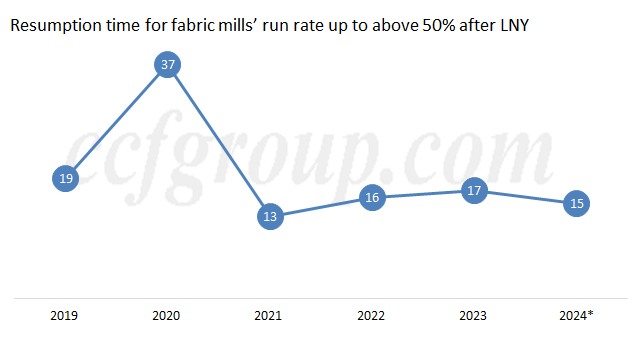
The initial inventory of downstream products after the holiday is relatively low, at around 20-25 days. However, PFY stocks of downstream plants are relatively sufficient, approaching the levels before the 2023 Spring Festival. Overall PFY stocks of downstream sectors are estimated to be around 20-25 days, shorter to guarantee production near mid-Mar and longer into Apr or even into May.
If there is no significant increase in costs or demand after the Spring Festival, PFY producers are unlikely to have high sales volumes before mid-Mar. The changes in social inventory of PFY will be opposite to the situation before the Spring Festival, gradually shifting from downstream buyers to upstream factories.
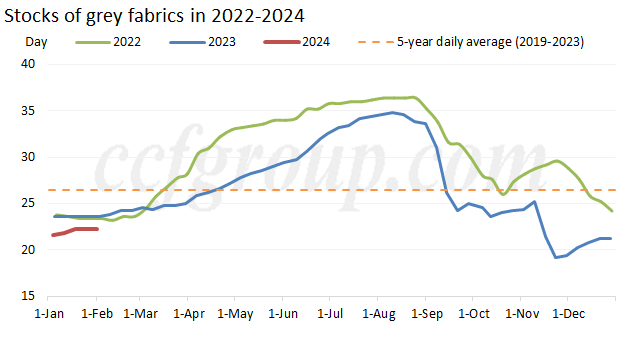
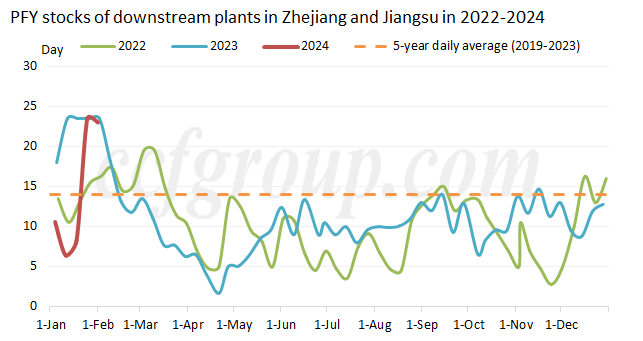
As of now, CCFGroup statistics showed that the planned production curtailment on polyester market in Jan and Feb is around 11.7 million tons, with around 7.55 million tons already implemented in Jan and around 4.15 million tons planned for Feb. Among the planned shutdowns in Feb, it is estimated that the PFY will account for around 2.17 million tons. There is a possibility of an additional 600kt/year of planned shutdowns, which have not been announced yet, so it is possible that the planned shutdowns of PFY market for Feb could increase to around 2.77 million tons. Most of the units are scheduled to restart in the second half of Feb. If the restart goes smoothly, the operating rate of direct-spun PFY plants will increase to around 90% by the end of Feb. Overall, the operating rate for each month in the first quarter of 2024 is expected to be higher than the five-year high from 2019 to 2023.
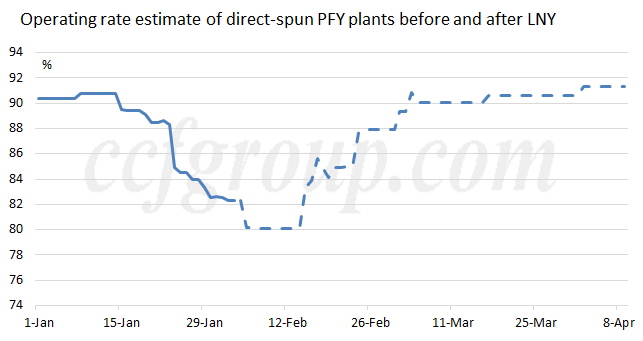
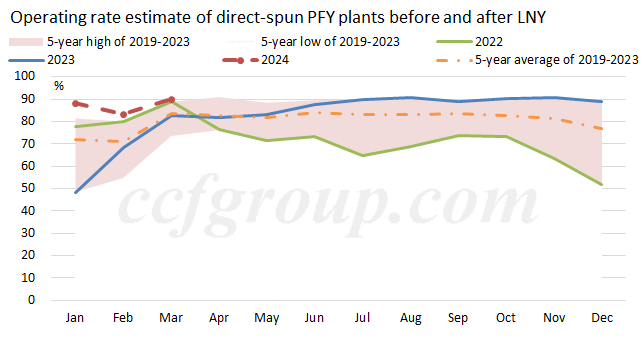
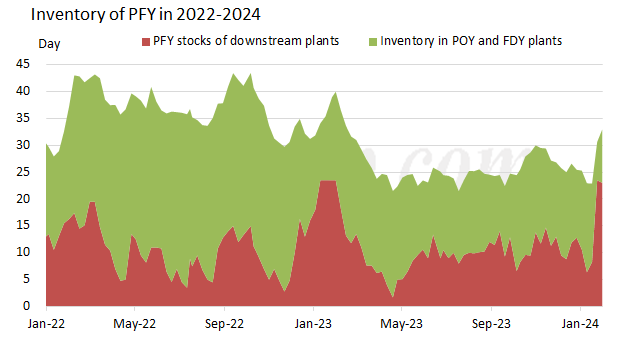
Under the premise that most downstream plants are on holiday in Feb and the operating rate of direct-spun PFY plants is estimated to be 87-88%, the comprehensive inventory of PFY may be as high as around 45-50 days by end-Feb, exceeding the high levels seen after the Spring Festival in 2022 and 2023.
In terms of prices and profitability for PFY after Spring Festival holiday, there will be pressure. The variable factor lies in the changes in speculative activities of downstream buyers. If there are new factors stimulating speculative activities before mid-March, the rate of inventory buildup in PFY factories will be mitigated. However, the rate of overall social inventory buildup will depend on the speed of downstream operations as well as whether PFY factories will schedule new maintenance after the holiday.
- Top keywords
- Cotton Price
- Cotton Futures Price
- Cotton Futures
- CZCE
- PTA Futures Price
- Chemical Fiber
- Polyester Prices
- Wool price
- PTA Futures
- Shengze Silk
- China
- Yarn Price
- price
- China Textile City
- Fibre Price
- Benzene Price
- Cotton
- Index
- Cotton Index
- PTA
- fabric price
- NYMEX
- Top 10
- textile industry
- Spot Cotton
- Cotton Yarn
- Polyester Price
- Futures
- PTA Price
- cotton yarn price

